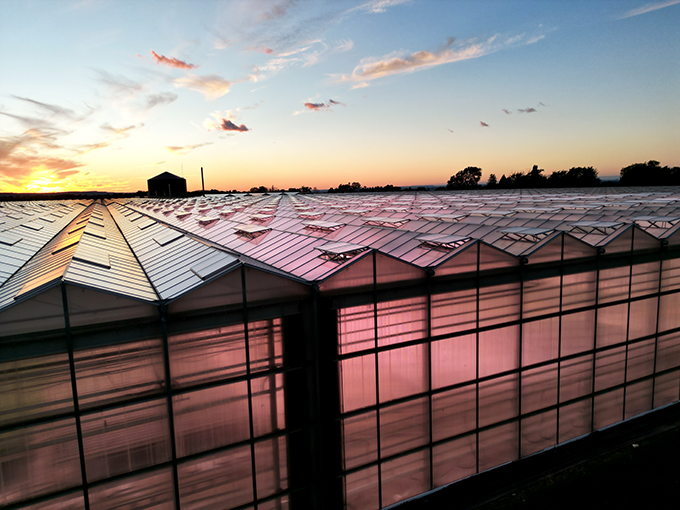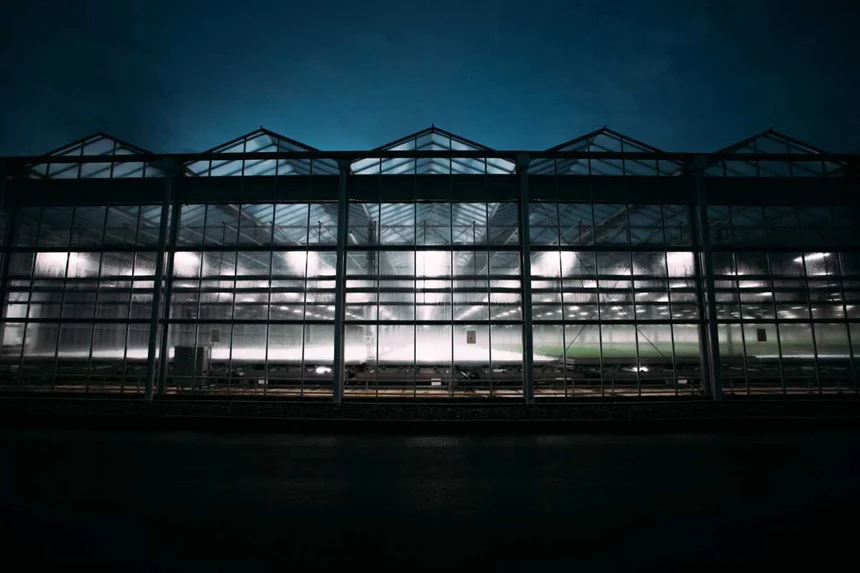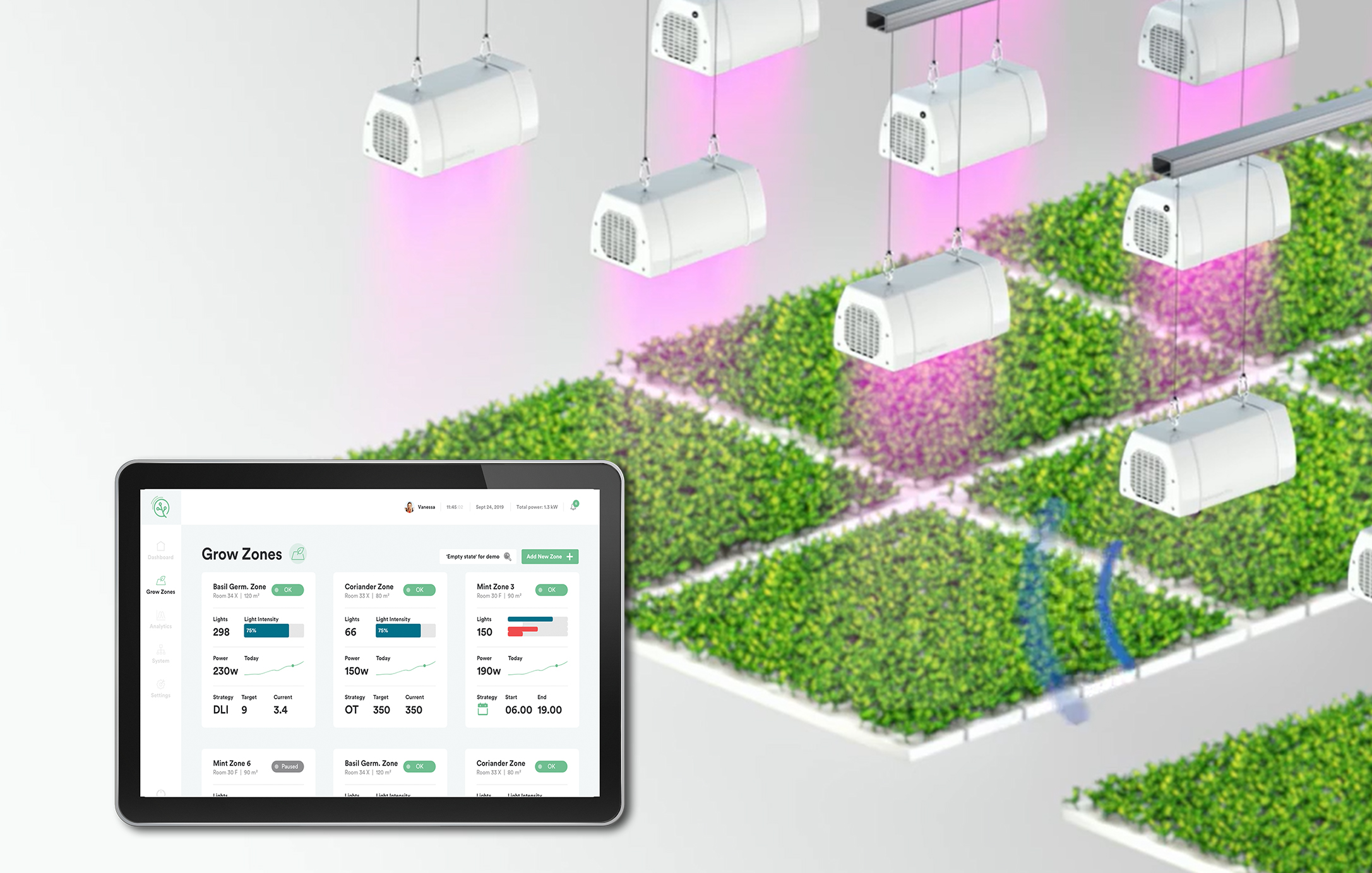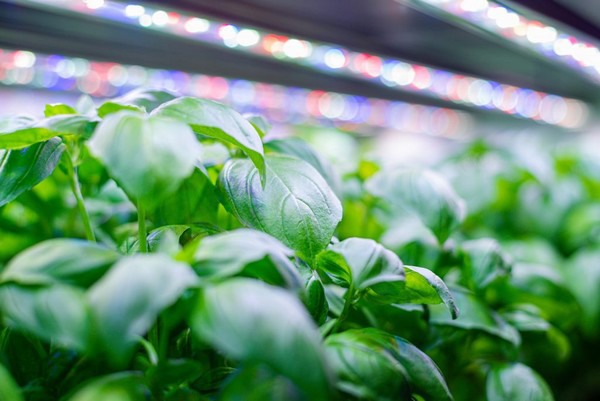Research
Articles
Food growers rely on supplemental greenhouse lighting for consistent year-round crop production, especially in climates with longer winter seasons and fewer natural daylight hours. To consistently produce delicious, beautiful, healing plants, growers need to provide the optimal amount of DLI (Daily Light Integral).
In Ontario’s Essex County, the combination of the greenhouse boom and light-hungry crops has called for more energy production, while causing skies to be light long after the sun has set. Greenhouse light pollution in the county’s Leamington and Kingsville areas has been a concern of late. Complaints have even come from across the border in Detroit, as citizens have raised concerns about “pockets of glow” in the night sky. Artificial nocturnal light can disturb human and animal sleep patterns and even disrupt airport operations. So, with the new year came new By-laws designed to limit light pollution in Essex County.
Leamington is considered the “greenhouse capital of North America,” having the highest concentration of greenhouses in a single municipality. Policies and precedents set in this region can influence the entire North American greenhouse industry. Leamington’s By-law states that greenhouses that use lights must install curtains on walls and ceilings, “ensuring no light escapes.” It goes on to say that curtains must be closed from one hour before sunset until one hour after sunrise, but ceiling curtains can be 10% open between 2.a.m. and 6 a.m. This is for ventilation of excess heat and humidity which may damage plants. There are concerns that 10% gapping over a period of 4 hours may be too restrictive to properly vent a greenhouse. You can read all the rules and the upcoming deadlines in the By-law here.
As Leamington’s greenhouse industry continues to grow, so does the need for more energy resources. Ontario’s Hydro One is actively boosting the power supply to bring an additional 1,000 megawatts to the area. To do this, they are currently in the process of adding 600 megawatts to the grid. By 2025, they will be adding a new 230-kilovolt line that will carry an additional 400 megawatts of power from Chatham to Leamington. This will enable more than 40 new medium-sized greenhouses to open.
While energy needs are increasing, greenhouses are potentially reducing their carbon imprint by bringing crops closer to home and table. The challenge is to strike a balance between growing the nutritious and healing plants we need while being energy and light-efficient. Perhaps this is where intelligent LEDs can play a key role.
Switching Over to LEDs
Ontario’s Independent Electricity System Operator (IESO) acknowledges that “LED grow lights are more efficient than traditional lighting systems, consuming up to 55% less energy to give the same level of light.” This is good news for both energy conservation and light abatement strategies. There are four more points to consider when evaluating LED vs HPS lamps and light pollution control:
1. Light spectrum
Human eyes are most sensitive to yellow and green light. Inherently, HPS light has a yellow-heavy spectrum compared to LED grow lights with a spectrum optimized for crop growth. A greenhouse designed with HPS lighting can appear approximately 43% brighter to the human eye than one designed with LEDs while delivering the same light intensity level to crops.
2. Lighting design
When greenhouse lighting is not purposely or carefully designed, light can leak around the perimeter and into the night sky. A good LED lighting company can create customized lighting plans and strategies to achieve crop goals and respect local By-laws. Yet even with the best-designed greenhouse lighting, thermal or shading curtains are necessary to control light pollution at night.
3. Light control
Technologies like the helioCORE™ system can help growers set photoperiods to reach DLI targets while prioritizing lamp use during the day. However, shading curtains are also required, as growers can’t completely shut off their lights overnight. Most photoperiods are set between 18 to 20 hours, providing 4 to 6 hours of the dark time. When used in conjunction with shading curtains, light control technologies can help growers practice light abatement and comply with gapping By-laws while still providing the DLI plants need.
There has never been a better time to switch to LEDs
Ontario’s Greenbelt Microgreens achieved a 13% increase in yield with ELIXIA adjustable spectrum LED grow lights and the helioCORE™ lighting control system. With those same technologies, cannabis producer Experience Organics achieved a 50% reduction in energy costs. Increasing yields, saving energy costs, and reducing visible light pollution are just some of the benefits of LED lighting.
Today, generous rebates and incentives are being offered across North America to growers who implement energy-efficient LEDs. These funds are being provided by government and utility organizations to encourage the switch from traditional lighting and reduce energy usage. As LEDs become the status quo in greenhouses, these rebates may disappear. So, it’s worth the time and effort to apply as soon as you start considering making the switch. Rebates per fixture can range from $200 to $350. While incentives can cover 25-50% of a new technology purchase and as much as 100% of a retrofit.
To learn more about the rebates and incentives available in your market, download our guide: Canada or contact Heliospectra and allow us to walk you through the process.
Get in touch with us!
From custom light planning, to tailored quotes, and everything in between,
our team of horticulture experts are always ready to assist.







